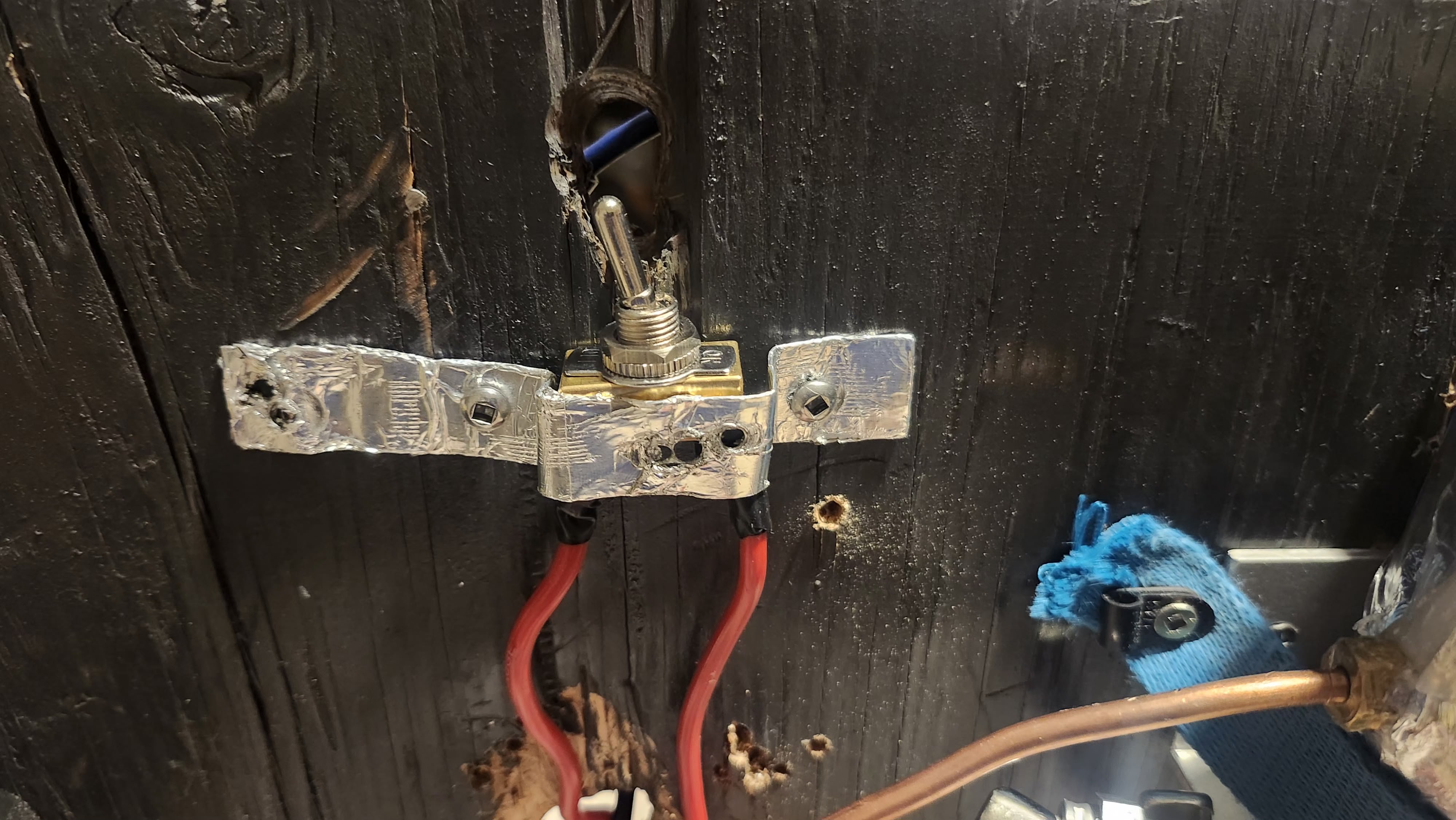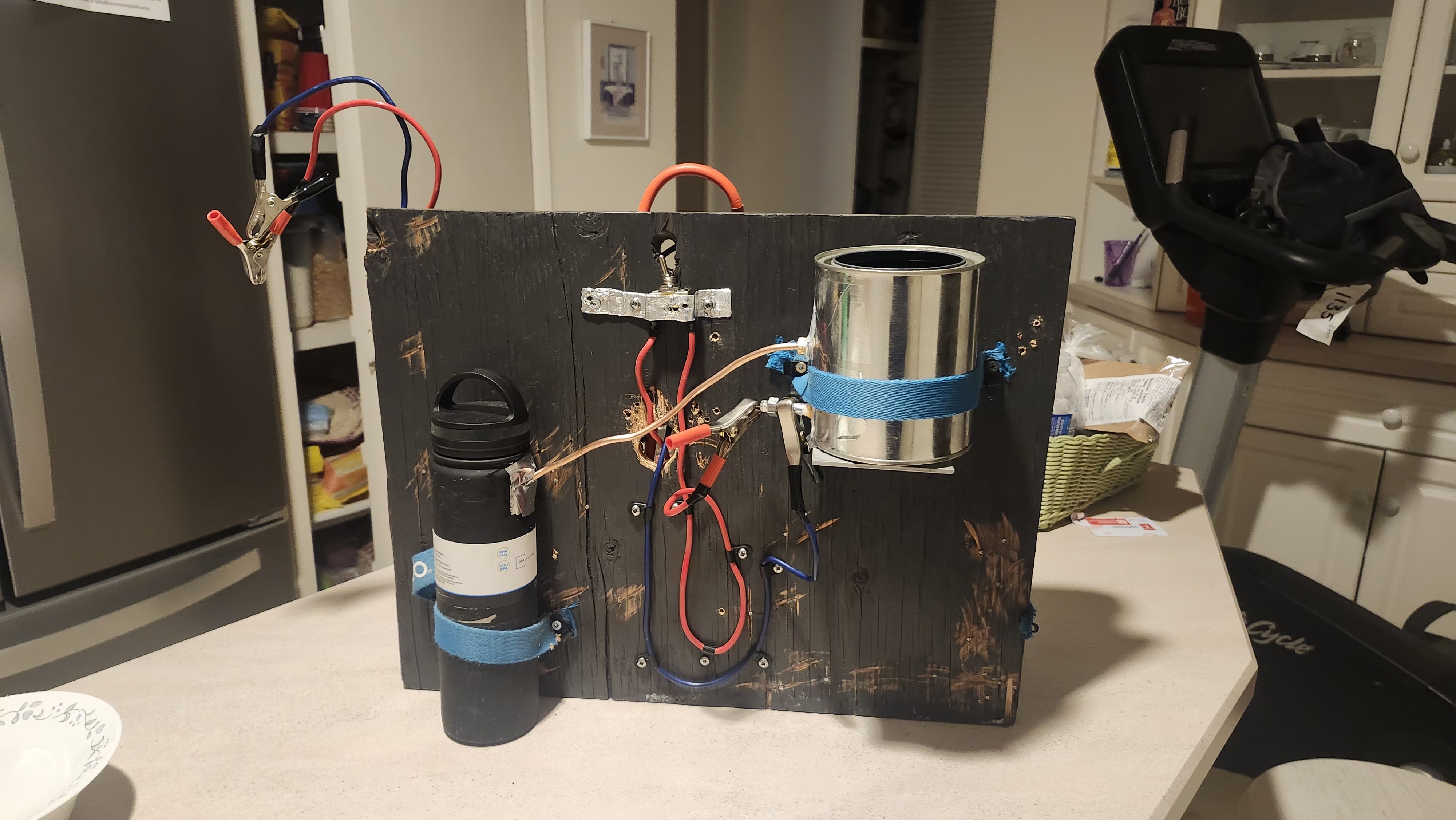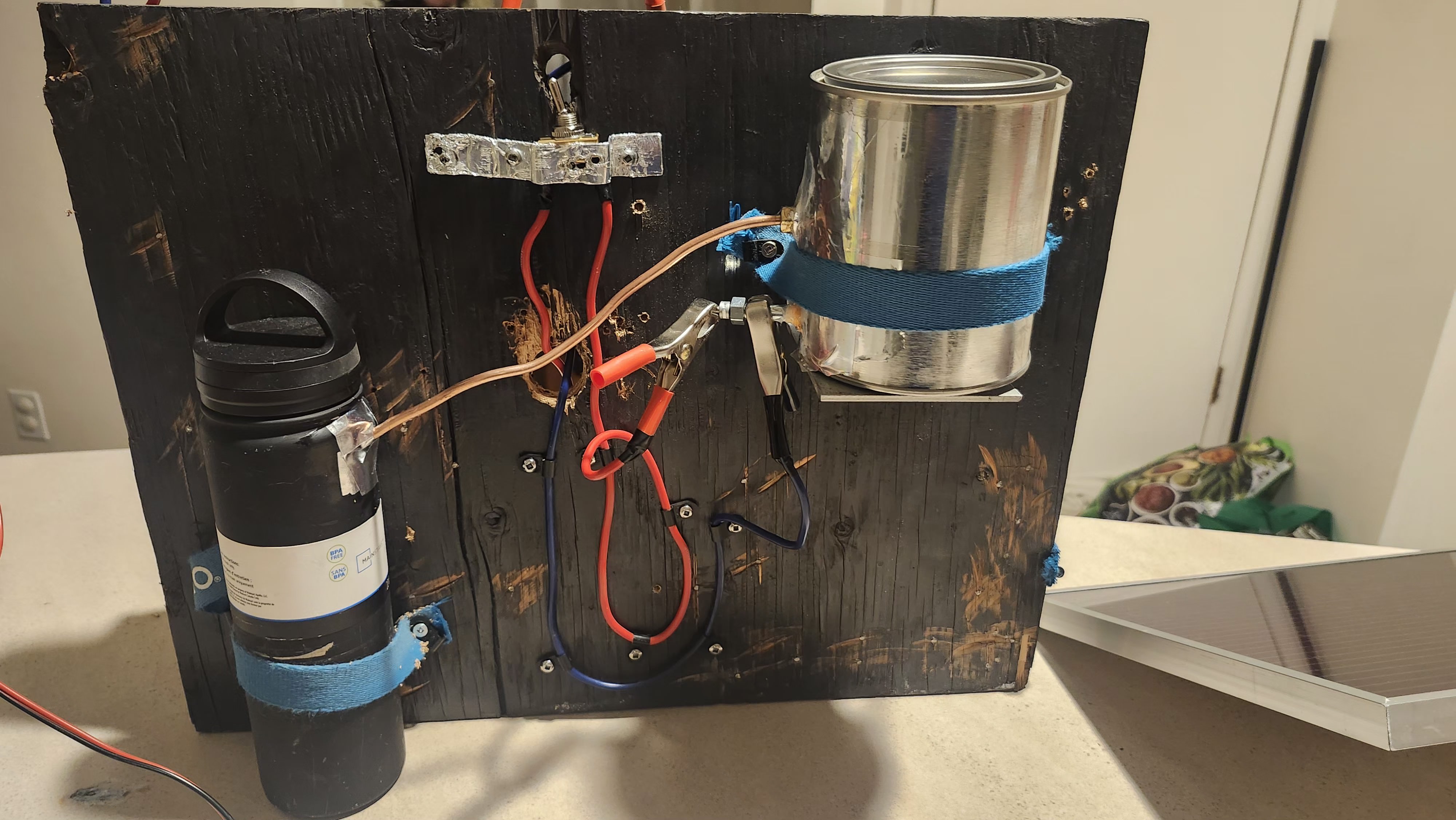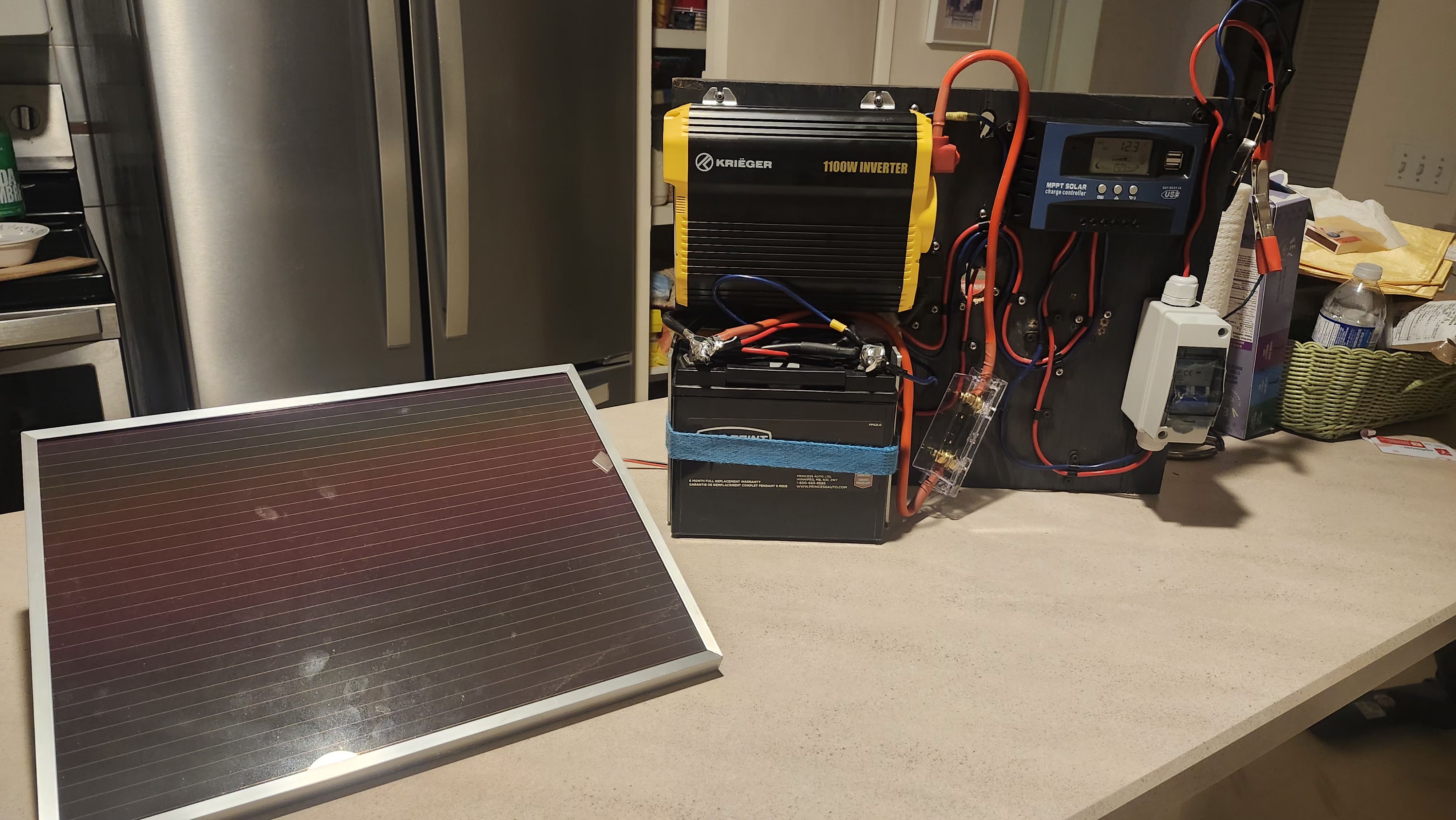Harnessing The Sun: A Sustainable Desalination Innovation
Grade 8
Presentation
Problem
Access to clean drinking water is becoming a huge issue in many parts of the world. There are areas that are dry or don’t have many freshwater resources, people struggle to find clean water. As the world grows, more people need more water, but the ways we get water aren’t always enough. The methods we currently use to clean and purify water also use a lot of energy, and that’s not great for the planet. Desalination is one way to solve this problem. Desalination means removing salt and other things from seawater to make it drinkable. Another method people are using is called traditional desalination method. It uses a lot of energy and cost a lot of money. Many desalination plants use electricity or even fossil fuels, which pollute the environment. This is especially bad in places where there is already not enough energy to go around. A possible solution to this is using solar energy to desalinate water. Solar power is clean, renewable, and free. This project will explore whether solar energy can be used to turn seawater into freshwater in a way thats better for the planet and more affordable. Using solar energy for desalination would be very useful in remote areas where electricity and clean water would be scarce. This method could provide a sustainable amount of freshwater for small communities, it could even help farmers. Countries that experience droughts or regions and places that have high levels of seawater intrusion could benefit greatly form this approach.
Method
Method (Procedure)
Hypothesis:
- If solar energy can heat saltwater, then that heat will turn the saltwater into steam. The steam can then be cooled and turned into fresh water. How well this works will depend on things like how strong the sunlight is and how well the system works.
Variables:
- Independent Variable: Solar energy input (the intensity and the duration of sunlight exposure)
- Dependent Variable: The Volume of freshwater collected after condensation
- Controlled Variables: The Amount of saltwater used, temperature control, condenser efficiency, and environmental conditions (wind speed, humidity, etc.)
Materials used:
Solar Panel: To collect sunlight and turn it into energy for the system.
Heating Coil: A coil that gets heated by the solar panel to heat the seawater.
Tubing: To direct the steam from the kettle to the condensation chamber.
Condensation Chamber (separate water bottle to hold the freshwater): Where the steam cools down and turns into fresh water and to catch the freshwater.
Thermometer: To check the temperature of the seawater and the condensation chamber.
Salinity Tester: To measure how salty the water is before and after the desalination process.
Procedure
How we set up the system:
- Firstly we had gathered all our materials that we needed for the desalination system, including the solar panel, the heating coils which is the copper tubing, a water bottle that will gather the freshwater as it is being condensed, a can that will hold the saltwater and the saltwater will be heated by a glow plug.
- When we assembled the solar panel and heating system, we positioned the solar panel in direct sunlight to maximize the energy absorption. The solar panel was connected to the glow plug which was then put inside the can to heat up the saltwater. Before we did anything we measured a specific amount of saltwater to ensure the consistency of the testing.
Preparing the Saltwater: We measured out the saltwarer and poured it into the can.
Heating the Saltwater:
- I Turned on the solar panel to gather the sunlight so the water would start on boiling to start the process. The glow plug would be connected to the solar panel so as the solar panel is collecting the sunlight/energy or when it is finsished the glow plug will start the process and heat up the water.
The Condensation of the Steam:
- Once the seawater had boiled, the steam rose. That steam then traveled through the tubing (the heating coil - copper tubing) into the other bottle. The fan had then helped cool the steam down and then to cool the tubing to prevent it from overheating, making it condense back into liquid water.
I had to collect the Freshwater:
- Once the steam turned into liquid water, I had collect it in the collection container.
When I tested the Salt Content:
- Before and after desalination, I used the salinity tester to measure how much amount of salt was in the saltwater.
I Recorded my Observations:
- I wrote how much water I got, how long it took, and the weather (like sunlight or wind) and if it affected the results.
Extra Information:
- The solar panel will be connected to the glow plug and the battery wires are drilled onto the wooden board once the solar panel starts to collect the energy the controller will help the battery charge faster even in low light conditions because it can convert extra voltages into more current then once the battery is charged there are 4 wires 2 of them that u hang on the battery and there is 2 more that u put onto the glow plug then the glow plug will start to glow and warm up heating up the water making it evaporate. Then the condensed freshwater will then flow through the copper tubing and the impurities will stay behind. then you will hopefully get a small amount of freshwater in the water bottle. to reduce time to not like go ahead and connect everything by yourself there is a switch that will help the glow plug turn on because thats only job is to help the glow plug turn on. there is also a breaker, no energy will flow to the battery if the breaker isn't on and that is for a safety reason because if there is a fire or something is burning, instead of cutting all the wires, you can just turn the breaker off to prevent any energy from flowing. There is also a can instead of a water bottle that will hold the saltwater and the glow plug is fastened onto the can and the copper tubing is secured in the water bottle. this sums up about everything about our project, but our inverter isnt working so it cannot minimize how much energy is needed to heat the glow plug but overall even without the inverter the project still works and can desalinate
Explanations:
.
As you can see here this is the switch and it is directly connected to the battery. When the switch is off the circuit remains incomplete, preventing the glow plug from turning on and heating the saltwater. Without the switch being turned on, the glow plug would not receive the power it needs,therefore, it would not start heating the saltwater.


These two photos is how the project looks from the back. The saltwater will be poured into the can that is positioned at the top, where it will be heated by the glow plug that has 2 alligator clips attached to it (the alligator clips are connected to the battery and are connected to the glow plug so it can turn on and start heating up the saltwater). To improve the efficiency, a cover will be placed on top of the can helping to retain all the heat while it is being boiled and allowing the water to boil more effectively.

Now this is a picture of the project in the front. As you can see in the top right corner of the system, there are 2 alligator clips, one red and one blue. To start the project you have to turn on the breaker, it is mostly for safety reasons so in case a fire had started, instead of cutting all the wires to stop the energy from flowing you can just turn ALL the power off by shutting the breaker off. For example its like a house breaker, if you turn off the breaker than all the electricity in your house will be turned off and no electricity would run. After you have the breaker turned on the controller will show you which parts are connected, the controller also helps the battery charge 20-30% more faster speeding up the charging process. It also helps charge the battery in low light conditions. As you can see in the photo there is a box that has 2 wires connected into eachother. Those are the battery and the inverter and there is a box covering them to avoid any electrical static when you are connecting the wires from the glow plug to the battery. The reason we have the inverter is because the original plan was for it to control how much energy is needed to heat the glow plug, so it can have a resonable amount of energy, but it sadly dosent work but it is ok because the project works even without the inverter working.
Analysis
Analysis
Efficiency:
- The main goal of this project is that to see how much freshwater you can get from a certain amount of saltwater. The more freshwater we collect means that the system works much better.
Energy Use:
- This part looks at how much energy the solar panel uses to heat the saltwater. Our solar panel should ideally be enough to power the whole entire process and be able to desalinate the measured amount of saltwater without needing extra power because there is a battery that will be charged by the solar panel (which is collecting the sunlight that is being converted into energy, or electricity.)
Water Quality:
- The saltiness of the water would be a big indicator of how well the desalination worked. After desalination, the freshwater should have little to no salt if ends up working properly.
Challenges:
- Some problems that might come up include the glow plug losing heat. I am not entirely sure that this would happen but it is just a hypothesis becuase during my testing on my other glow plug, the glow plug lost heat and burned. Im pretty sure that is because there was no water in the can, thats why it ended up overheating and burning.
- Another challange that I had experienced during this project was that when I connected the wires from the battery to the solar panel, and the other wires I connected them to the battery it ended up burning and the switch ended up melting in the inside. The wires were also burnt, my dad took the project to a electrician to find out what had happended because when we tried searching up the problem we couldn't find the reason and problem. The electrician had told us that the wires that had burnt were connected to the wrong places (the black alligator clip had been burnt and melted because it was connected to the wrong spot, the red alligator clip was more damaged than the other one because the battery was already fully charged and was ready to give energy to make the glow plug heat up but it ended up burning the wires.) The electrician had told us the reason and we ended up fixing it by using our extra wires and alligator clips.
- My other challange was my older project, my older project was pretty simple but it wasn't eco friendly and good for the enviorment. It used a burner to desalinate the saltwater which would be creating carbon dioxide which would pollute the enviorment. Now my project uses an eco friendly desalination method because it dosen't pollute the air. So using solar energy will reduce the need for fossil fuels, making it a cleaner option.
Conclusion
This project can shows that solar- powered desalination is practical and very sustainable and safe for the enviorment and is a good method for turning saltwater into freshwater. It uses solar energy to charge a battery, the battery then heats up the glow plug, then the glow plug desalinates the saltwater to then create steam which is then cooled and turned into freshwater. There were a lot of challenges (i have mostly all of them explained on my analysis in more detail) like the loss of heat during the process of desalination and salt buildup, but those were all fixed with improvements! Now this solar desalination method is a more cleaner, more affordable way to help solve water crisis's, especially in places where there isn't enough clean water or electricity. In the future this method can be improved and even more people could benefit from this type of water purifications.
Citations
https://en.wikipedia.org/wiki/Desalination
https://www.iberdrola.com/innovation/desalination#:~:text=What%20is%20desalination,human%20consumption%20or%20agricultural%20purposes.
https://www.energy.gov/eere/iedo/desalination-basics
https://news.mit.edu/2022/solar-desalination-system-inexpensive-0214
https://news.mit.edu/2024/solar-powered-desalination-system-requires-no-extra-batteries-1008
https://en.wikipedia.org/wiki/Solar-powered_desalination_unit
https://www.sciencebuddies.org/science-fair-projects/project-ideas/EnvEng_p022/environmental-engineering/solar-powered-water-desalination
https://uwaterloo.ca/engineering/news/researchers-unveil-solar-powered-desalination-breakthrough
https://uwaterloo.ca/water-institute/news/turning-seawater-fresh-water-through-solar-power
https://www.kcl.ac.uk/news/solar-powered-technology-converts-saltwater-into-drinking-water-emission-free
Acknowledgement
I would like to express my deepest gratitude to everyone who supported me throughout this project.
First I want to thank Ms. Kale for her encouragement and belief in me. She inspired me to participate in the science fair and constantly pushed me to do better. Her support motivated me to take this challenge with confidence, and I really appreciate her guidance.
A HUGE thank you to my Dad, who not only built this project and helped me get involved into building it but also put in so much effort to make it successful. He stood by me through every step, reminding me not to give up when the testings i did didn’t work as expected and even more beyond just the technical support, he was there for me during my toughest moments, helping me through challenges in both this project and my mental health. His constant support and motivation had a huge positive impact on me towards this project, and I couldn’t have done this without him at all.
I also want to acknowledge everyone who offered advice, support, and encouragement along the way. This project would not have been possible without the people who believed in me. Thank you so much guys!

